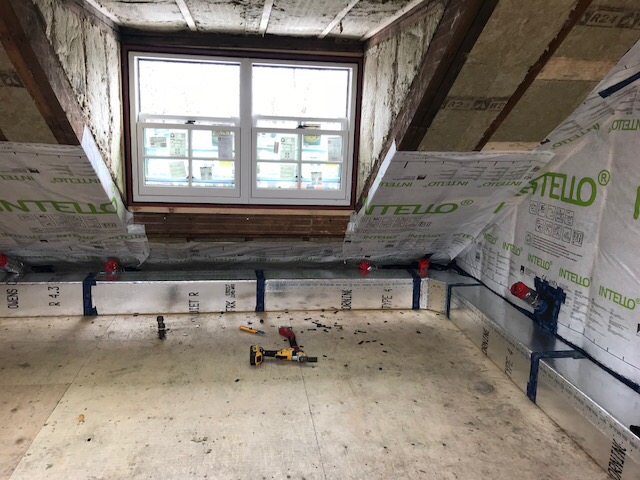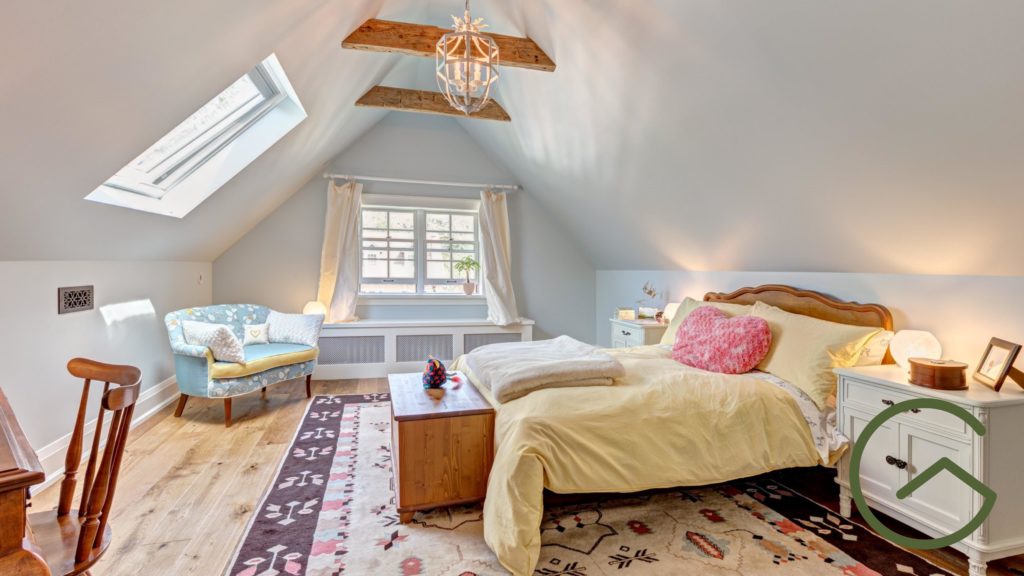When high performing walls are allowed to breathe

By Chris Phillips
I last blogged about the perils of spray foam insulation, highlighting its high carbon impact and potential risk for off-gassing, which can compromise occupant health, and vapour impermeability, which can degrade masonry walls over time.
Toronto’s centenarian brick houses were designed (intentionally or otherwise) to allow vapour to flow in and out, in both directions. These houses get top marks for ventilation, but poor marks for energy efficiency. A renovator is challenged to add insulation and air seal the building envelope, while also ensuring the long-term durability of that beautiful old red brick.
Spray foam is an all-in-one insulator and vapour barrier, which sounds great until you realize that this two inch impermeable layer, sprayed directly onto masonry walls, can entrap moisture, causing it collect and erode brick, leading to costly replacement and loss of beautiful century-old masonry and mortar joints.
The safer alternative to spray foam in retrofits of older homes is to use vapour open wall assemblies, which are well insulated and air sealed, but function as the walls were initially intended. This alternative has a much lesser carbon impact than spray foam.
We prefer using two types of insulation. Cellulose, an effective insulator made from recycled fiber content (most often newspaper), is our go-to choice. Our second favourite insulation is Rockwool, which as its name suggests is made from stone. It has a higher environmental footprint than cellulose, but much less than spray foam. Rockwool can absorb moisture without affecting its thermal resistance, or insulation abilities.
Once the insulation is installed, a vapour retarder is applied. Unfortunately 6M Poly, a vapour ‘barrier’, is the go-to product for most contractors. Our aim is not to trap vapour, as this can lead to moisture problems. We prefer a product called Intello by Pro Clima, which is a two way vapour open selective vapour retarder. Intello is a plastic product, however the company recently re-introduced an improved version made of recycled paper that’s receiving positive reviews. These products are available in Toronto through 475 Building Supply.

Also factored into a vapour open assembly is the prevention of thermal bridging, primarily the energy lost through wood studs. Continuous insulation is now mandated in Ontario’s building code for new construction, but it is standard practice for all good retrofit work. In most of our projects, clients prefer to maintain their brick exterior. This is usually achieved by placing a layer of insulation directly onto the interior masonry wall prior to installing the interior framing, and then filling between the studs.

We also apply a caulking product called AirDam to minimize air infiltration in places where we cannot have a continuous vapour retarder.
This wall system is ideal for century old houses and any house really. Well insulated, air-tight homes are durable, comfortable and light on the environment.
As retrofits ramp up with the help of government incentives, it is imperative to prioritize building science and the products’ full carbon impact. The health and safety of homes and their occupants depend on it.
